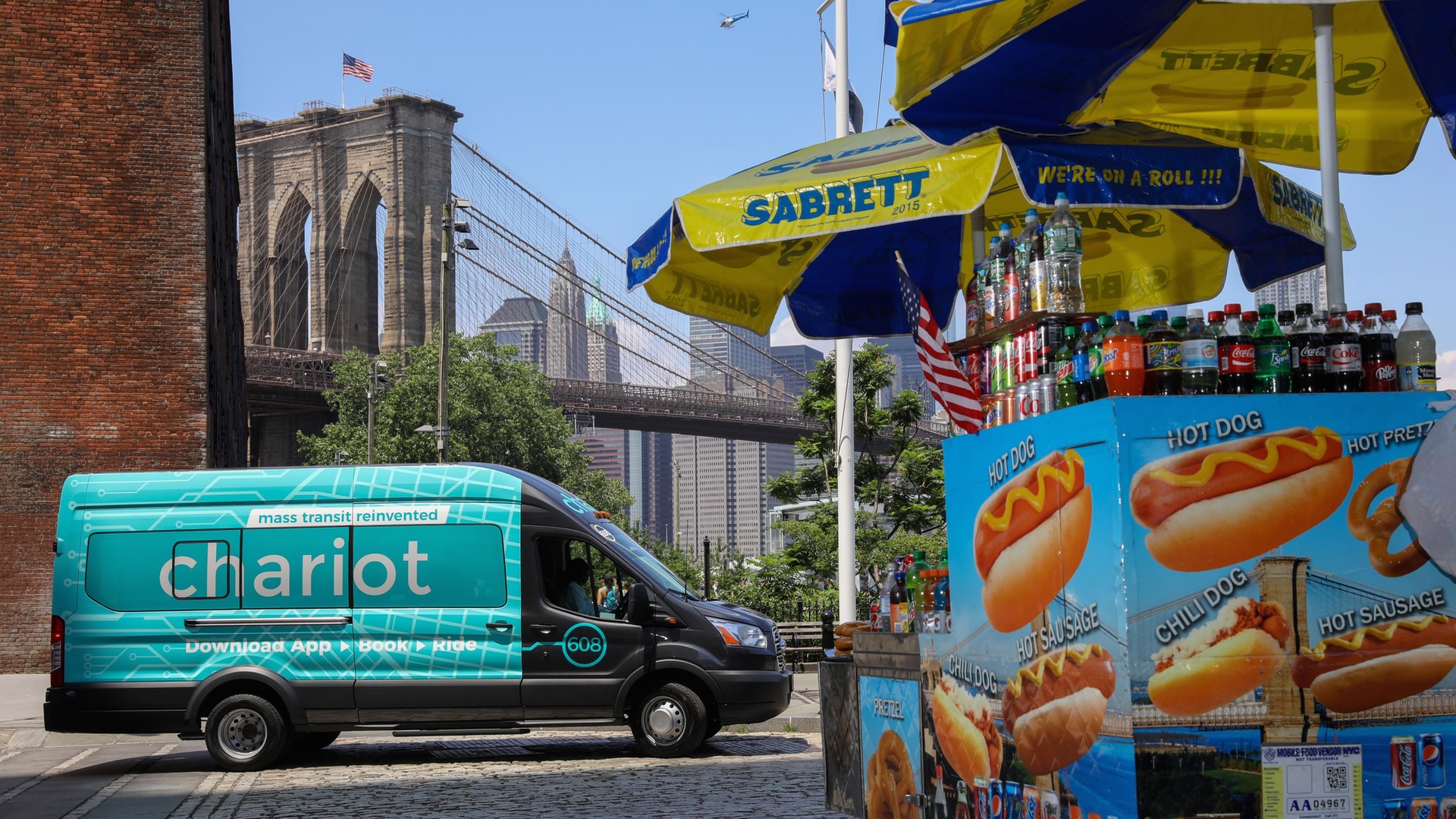

Automakers have become convinced that they need to expand beyond merely making and selling cars in a world full of mobility services. But while most focus on car-sharing services, Ford’s biggest play in the sector has been its purchase of the Chariot shuttle service.
Chariot, which asks commuters to share a van rather than hail individual Uber or Lyft cars, will launch in New York City in August. Vans will operate in two “pre-planned service areas” in Manhattan and Brooklyn at a flat rate of $4.00 per ride, according to Ford. The automaker hopes to have 60 vehicles operating in New York City by the fall.
Chariot’s Ford Transit vans can accommodate up to 14 people, who reserve seats via smartphone app. Ford targets the service at so-called “transit deserts,” where residents are not within walking distance of bus stops or subway stations. Chariot picks up passengers individually, and drops them off at a central location, like a downtown business district or transit hub. Ford claims each van can remove up to 10 cars from the road during peak commuting times.
Chariot routes are determined in part by Ford’s Global Data, Insights, and Analytics team, which looks at commuter demand, traffic, and infrastructure. But in New York, Ford will also implement a crowd-sourced method that allows users to suggest a route, and share it with people making similar commutes. Once enough rides sign up for a proposed route, Chariot will start running it.
In New York, Ford is taking a very different approach to mobility services than rival General Motors. GM’s Maven division operates a car-sharing service in the Big Apple, but that is geared more toward city residents looking to escape to the country for the weekend, rather than commuters headed to and from work.
As automakers look to exploit the trend of mobility services, they will have to find ways to fit these services into the larger transportation picture. New York already has many alternatives to cars, including subways, buses, and commuter rail—not to mention taxis and ride-sharing services. By positioning Chariot as a way to supplement public transit, rather than replace it, Ford might be able to find a place for it in that crowded mix.